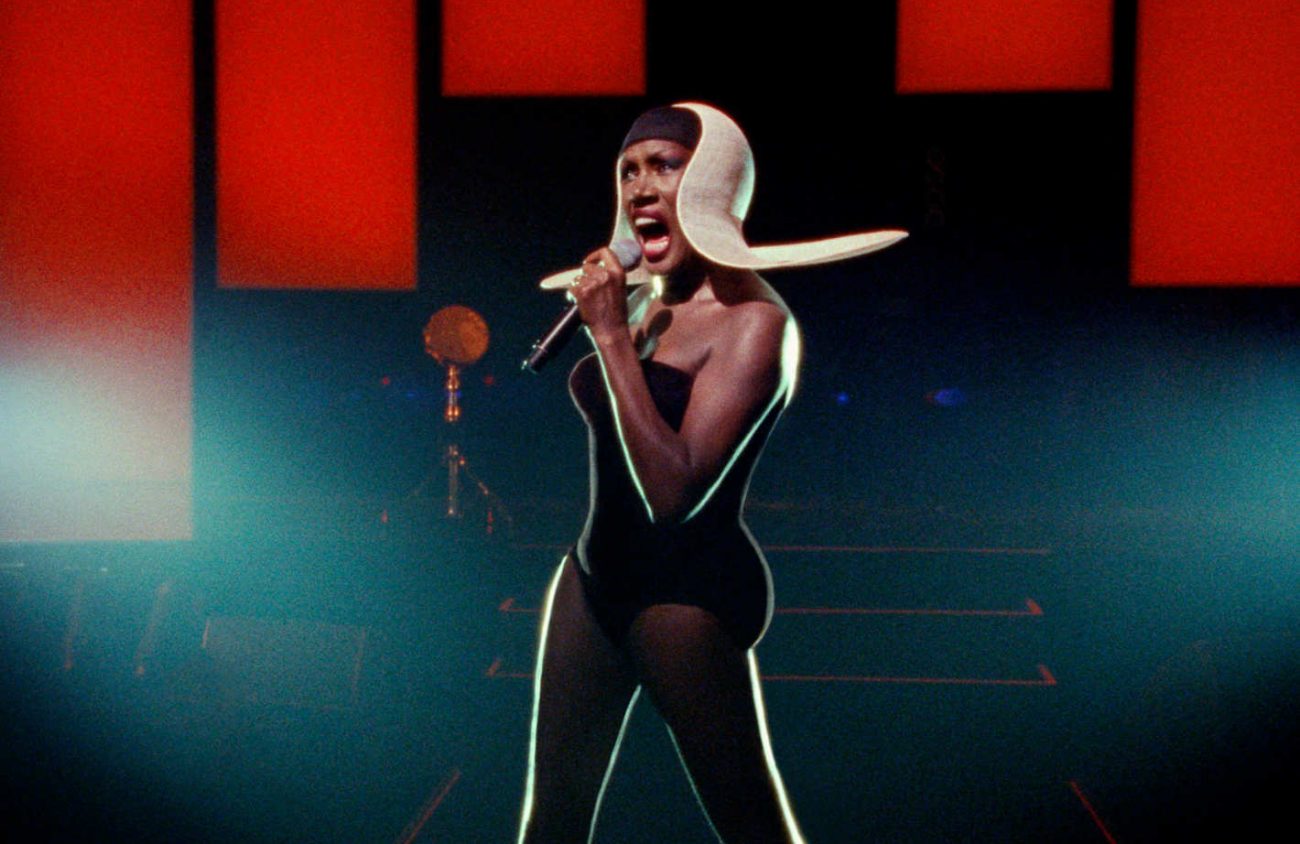When you’ve watched enough documentaries about musicians and performers, you begin to expect certain things from them. The beats grow familiar; the stories hum along with the comforting structure of a pop song. Leonard Cohen wasn’t singing about film, but I often think of him when I think about story structure: “Well it goes like this: the fourth, the fifth / The minor fall and the major lift.”
Grace Jones: Bloodlight and Bami does not reward these expectations. It doesn’t follow a pattern, interview talking heads, introduce its players, offer background or tell you anything that is not innate to the images on screen. Sophie Fiennes’ documentary is almost as far from an episode of Behind the Music as a Marvel movie is from one of Kelly Reichardt’s character studies.
Half the film is spent in Jamaica, as Jones visits family and neighbors and muses on the relevance of her abusive grandfather to her stage persona. The other half follows her around the world. She orders champagne for breakfast, experiences a baffling French shoot where she is surrounded by dancers garbed in gauzy pink, records her 2008 album Hurricane, goes out dancing and, between all of this, performs.
The performance footage knits everything together; it’s the blood of the film, though it appears, like everything else, without context. (Given Hurricane’s release date, it’s relatively safe to assume the live footage is from her 2009 tour.) It’s not simply that Jones onstage is the Jones we all might be most familiar with — her stunning presence; the commanding voice; striking costume changes and persona shifts that take her from goofiness to ferocity — but that the movie shows you all the pieces that create Jones the performer.
But you have to give your full attention to watching and listening for them. Bloodlight and Bami is both intensely intimate and frustratingly opaque; if you want to know facts, dates, people’s full names, the critical reception of Hurricane, you’ll have to do the homework yourself. This can seem like an omission, but it’s also a powerful choice: Fiennes’ film doesn’t tell you about Grace Jones so much as it brings you in close and lets you experience Grace Jones.
Jones tells incredibly personal stories, but they come out in different conversations, elements you have to remember from one family gathering to the next; she confesses that there’s only one man who’s ever made her feel weak in the knees, but you will never see a photo of them when they were in love. You have to look at his face now and see what she sees.
Like its title and structure, Bloodlight and Bami is two things: deeply personal and, unless you are an all-knowing Jones fan already, moderately frustrating. Maybe, though, leaving you wanting more is exactly the point. Maybe someone else can make the talking-heads movie that traces Jones’ entire career.
Fiennes’ unconventional film is far less concerned with the story of Grace Jones than with the person that is Grace Jones — and it is a treat to get to spend two hours with her. (Opens Friday, May 11, at Broadway Metro)
